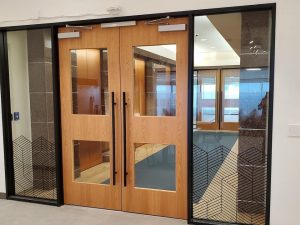Pressing your brake pedal takes many parts to slow or stop your car. It is vitally important to understand how these parts work together to bring your vehicle safely to a stop. Squealing or screeching noises are your brakes’ telling you they need service. If you see a brake system warning light on your instrument panel, immediately take your vehicle in for service.
Brake Rotors
While most people focus on the brake pads when discussing brake repair Edmonds, WA, the rotors (also known as disc brakes) also need regular service. These metallic discs sit on the wheel hub assembly and are pressed down by the brake pads when the vehicle’s brakes are activated. The rotors are designed to handle the friction and heat this pressure generates, but they’ll eventually wear down or become damaged. The friction and heat they receive depend on the vehicle’s driving conditions. For example, those who often drive down rough roads or live in harsh climates will likely need new rotors sooner than those who commute on highways. The rotors can be replaced or resurfaced to restore their performance. However, if they’re warped beyond the point of resurfacing, they’ll need to be replaced entirely. This is a critical step in maintaining your safety on the road.
Brake Pads
Brake pads are the component that contacts and applies pressure to your brake rotors. When you hit the brakes, the caliper forces the pads against the spinning rotors, creating friction and slowing your vehicle. Your brake pads are fitted with small metal attachments that act as wear indicators. When the pads start to wear down, the metal contacts the rotor and emits a high-pitched noise, warning you that it’s time for new pads. If your car’s brake pads wear down unevenly, it may cause your vehicle to pull to one side when you brake. This can increase stress on your steering system and cause other parts to wear out faster. To prevent this, it’s essential to check your brake pads and replace them when necessary regularly.
Brake Fluid
Brake fluid is a hydraulic fluid that transfers force from your brake pedal to your car’s calipers and wheel cylinders. It’s non-compressible, so keeping your braking system working correctly is essential. The Department of Transportation (DOT) regulates the specifications for brake fluids. There are three main classifications, including DOT 3 and DOT 4, which are glycol-based, and the silicon-based DOT 5. Glycol-based brake fluids are hygroscopic, meaning they absorb moisture from the air over time. This lowers the boiling point and can cause premature failure of your brake system. Glancing at your brake fluid reservoir will reveal if it’s time to change it. A dark fluid is a sign that the fluid is contaminated with moisture and should be replaced immediately. A technician will use a power or manual pressure bleeder to flush the old brake fluid out of your master cylinder reservoir and into a new bottle, replacing it with the correct DOT-specified fluid for your vehicle.
Brake Lines
You rely on your brake lines to transfer pressure from the master cylinder to the brake calipers, which bring your car to a stop. If the line breaks or collapses, visiting a professional for auto repair in Surrey is essential as soon as possible. Metal brake lines typically last the lifetime of your vehicle, but rust and corrosion can lead to them breaking down or becoming damaged. They can also break down due to impact damage or fatigue. A spongy brake pedal is a common sign that you’re due for a brake line repair. If you choose to replace the brake lines independently, it will take some work and tools. You’ll need to raise your car with a jack and remove the old lines with a brake line cutter. Once you have the new lines, you must make some bends and coils with a brake line bender. Then, you’ll need to flare the ends of each line with a flaring tool.






Leave a Reply